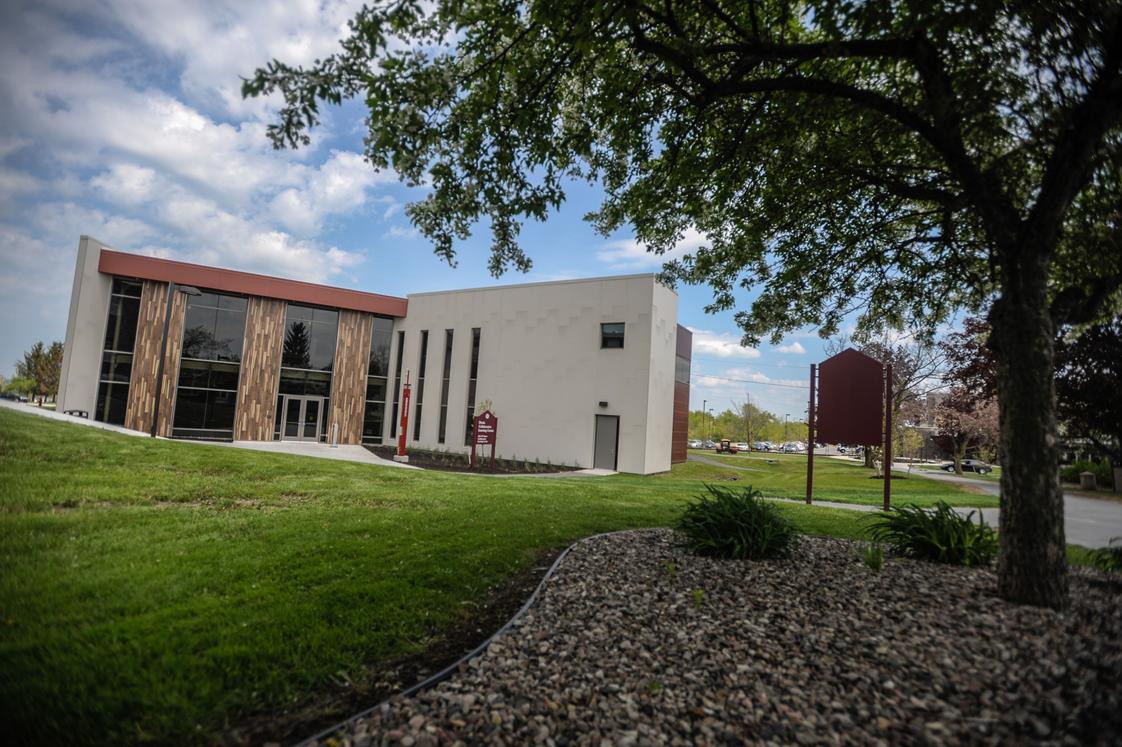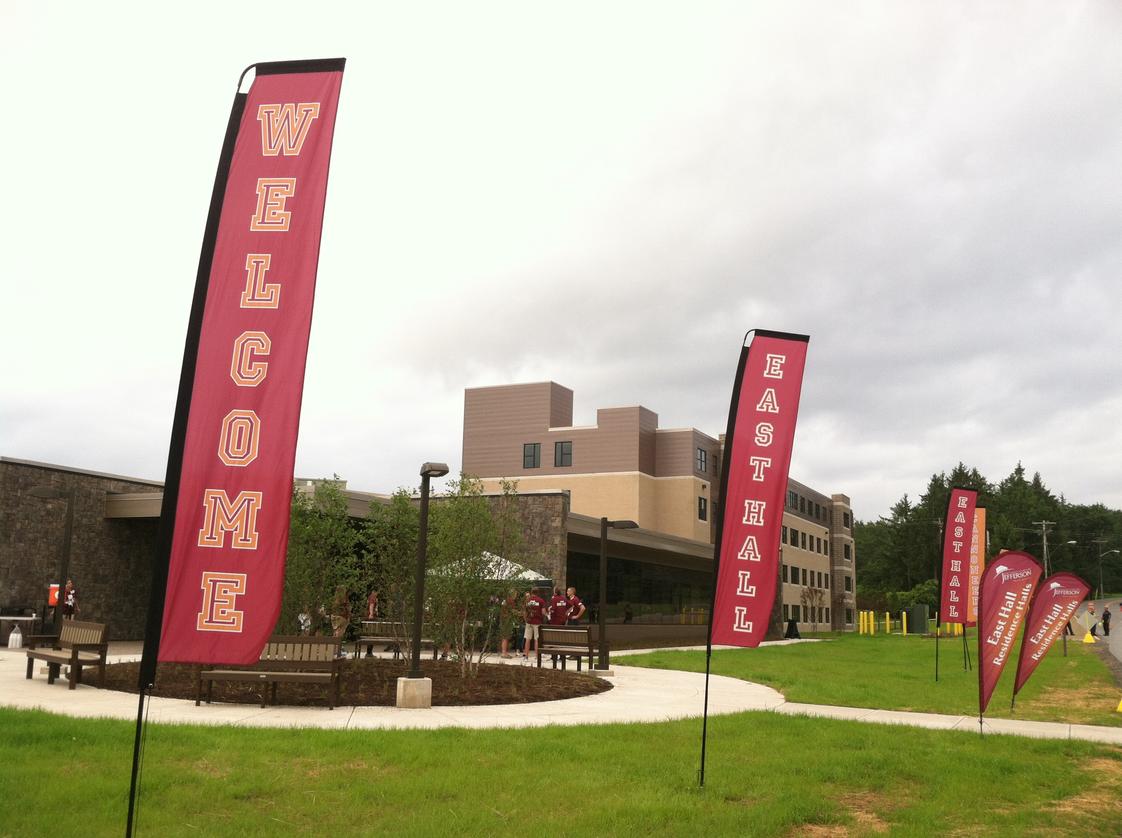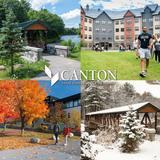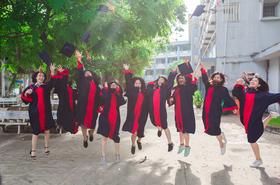- Jefferson Community College is one of 64 campuses--and one of 30 community colleges--which comprise the State University of New York (SUNY) system; it is the only institution of higher education whose campus is within a 50 mile radius of the city of Watertown, NY.
School Highlights
Jefferson Community College serves 3,294 students (40% of students are full-time).
The college's student-teacher ratio of 13:1 is same as the state community college average of 13:1.
Minority enrollment is 34% of the student body (majority Hispanic and Black), which is less than the state average of 62%.
Quick Facts (2025-26)
- Enrollment: 3,294 students
- In-state tuition: $4,752
- Out-state tuition: $9,504
- Student-teacher ratio: 13:1
- Minority enrollment: 34%
- Source: Verified school update
School Overview
The teacher population of 252 teachers has stayed relatively flat over five years.
Jefferson Community College
(NY) Community College Avg.
Carnegie Classification
Associate's Colleges: High Transfer-Mixed Traditional/Nontraditional
Baccalaureate/Associate's Colleges: Mixed Baccalaureate/Associate's
Institution Level
At least 2 but less than 4 years
At least 2 but less than 4 years
Institution Control
Public
Private not-for-profit
Total Faculty
252 staff
159 staff
School Calendar
Student Body
The student population of Jefferson Community College has grown by 10% over five years.
The student-teacher ratio of 13:1 has increased from 11:1 over five years.
The Jefferson Community College diversity score of 0.54 is less than the state average of 0.76. The school's diversity has grown by 27% over five years.
Total Enrollment
3,294 students
1,129 students
Student-Teacher Ratio
13:1
13:1
# Full-Time Students
1,319 students
528 students
# Part-Time Students
1,975 students
601 students
# Enrollment Undergraduate
329 students
357 students
# Full-Time Undergraduate Students
1,319 students
519 students
# Full-Time Graduate Students
n/a
44 students
# Part-Time Undergraduate Students
1,975 students
850 students
# Part-Time Graduate Students
n/a
41 students
Total Dormitory Capacity
294 students
382 students
% American Indian/Alaskan
1%
n/a
% Asian
2%
8%
% Hispanic
9%
23%
% Black
7%
18%
% White
66%
38%
% Hawaiian
1%
2%
% Two or more races
3%
3%
% Non Resident races
1%
3%
% Unknown races
10%
5%
Diversity Score
0.54
0.76
College Completion Rate (Students who graduate in less than 4 years)
27%
33%
College Completion Rate (Students who graduate in 4 years or more than 4 years)
n/a
40%
Average Graduate Earnings (10 Years)
$33,400
$35,200
Tuition and Acceptance Rate
The public in-state tuition of $4,752 is less than the state average of $5,902. The in-state tuition has declined by 16% over four years.
The public out-state tuition of $9,504 is less than the state average of $10,404. The out-state tuition has grown by 67% over four years.
In-State Tuition Fees
$4,752
$5,902
Out-State Tuition Fees
$9,504
$10,404
Tuition Notes
$5,448 per year
% Students Receiving Some Financial Aid
81%
88%
Median Debt for Graduates
$11,887
$13,841
Median Debt for Dropouts
$5,740
$5,500
Acceptance Rate
n/a
74%
SAT Reading
n/a
475
SAT Math
n/a
505
SAT Writing
n/a
485
ACT Composite
n/a
20
ACT English
n/a
18
ACT Math
n/a
20
Sports
Total Sports Offered
8 sports
Sports
BaseballBasketball
Cross CountryGolf
LacrosseSoccer
SoftballVolleyball
Extracurriculars
Total ExtracurricularsTotal Extra-curric.
2 extracurriculars
ExtracurricularsExtra-curric.
Club or Organization:
Recreational Athletic Programs:
Looking for a great club to join…….We got it! We have 30+ clubs and organizations to join.
Recreational Athletic Programs:
Intramural Sports
Source: 2024 (or latest year available) Integrated Postsecondary Education Data System (IPEDS) , School Administrators
School Notes
- School Mascot: Cannoneers
- The College offers 17 A.A.S. career curricula, 15 transfer A.A. or A.S. curricula and 9 certificate programs. Along with its credit bearing programs, the College offers a variety of workshops, seminars and workforce training opportunities. Cultural events, open to the public, routinely include film and theatrical events, lectures, seminars, and art exhibitions. Personal, academic, and vocational counseling are provided to both students and the community. The College is supervised by the State University of New York and sponsored by Jefferson County. Its service area is largely rural, with agriculture and tourism the dominant industries. The College campus, located near Interstate Highway 81 on the western boundary of the City of Watertown, consists of eight permanent buildings, athletic fields and ample parking for its commuter student body. Technology plays an important role in supporting the educational process at the College. There are 5 instructional computer classrooms and one open computer resource center which are all connected to a campus-wide network. Faculty and staff have access to the same campus-wide network from their offices for application and information sharing as well as electronic mail and Internet access. In addition to its Middle States accreditation, the College is fully accredited by the National League for Nursing Accrediting Commission and is a member of the Sevicemembers Opportunity College (SOC) and the Servicemembers Opportunity College Associate Degree Network (SOCAD). Jefferson is a founding member of the higher educational consortium, SUNY Colleges in the North Country.
Frequently Asked Questions
How much does Jefferson Community College cost?
Jefferson Community College's tuition is approximately $4,752 for In-State students and $9,504 for Out-State students.
What sports does Jefferson Community College offer?
Jefferson Community College offers 8 interscholastic sports: Baseball, Basketball, Cross Country, Golf, Lacrosse, Soccer, Softball and Volleyball.
Recent Articles

The Rise of Technical and Vocational Training in 2025
Explore the 2025 surge in technical and vocational training—enrollment, policy, costs, and why this path is gaining ground for students and parents.

Stackable Credentials: How Community Colleges Advance Careers
Discover how community colleges use stackable credentials to build career pathways, boost earnings, and enable lifelong learning in 2025.

High-Paying Jobs You Can Get with a Community College Degree
Discover top high-paying careers you can launch in 2025 with a community college (associate) degree and high-growth credentials in tech, healthcare and trades.
















